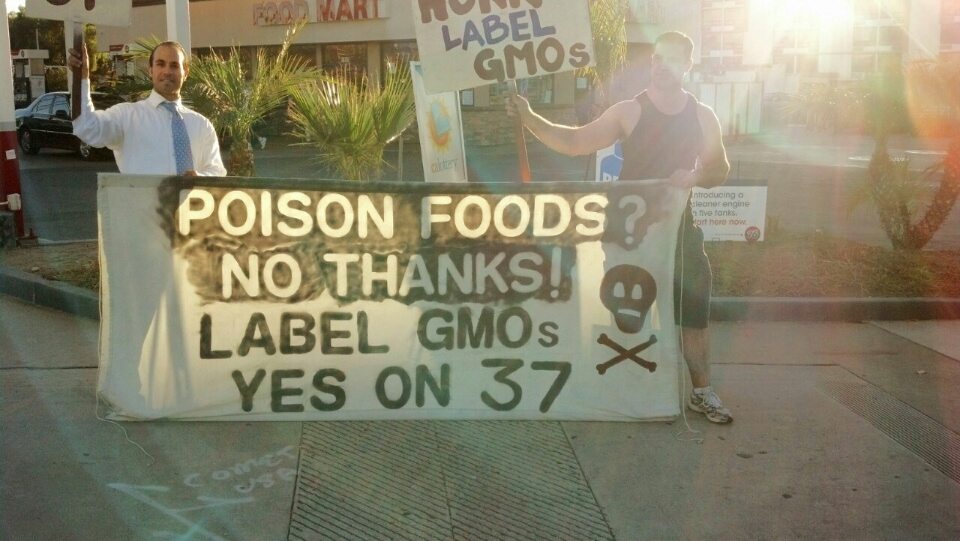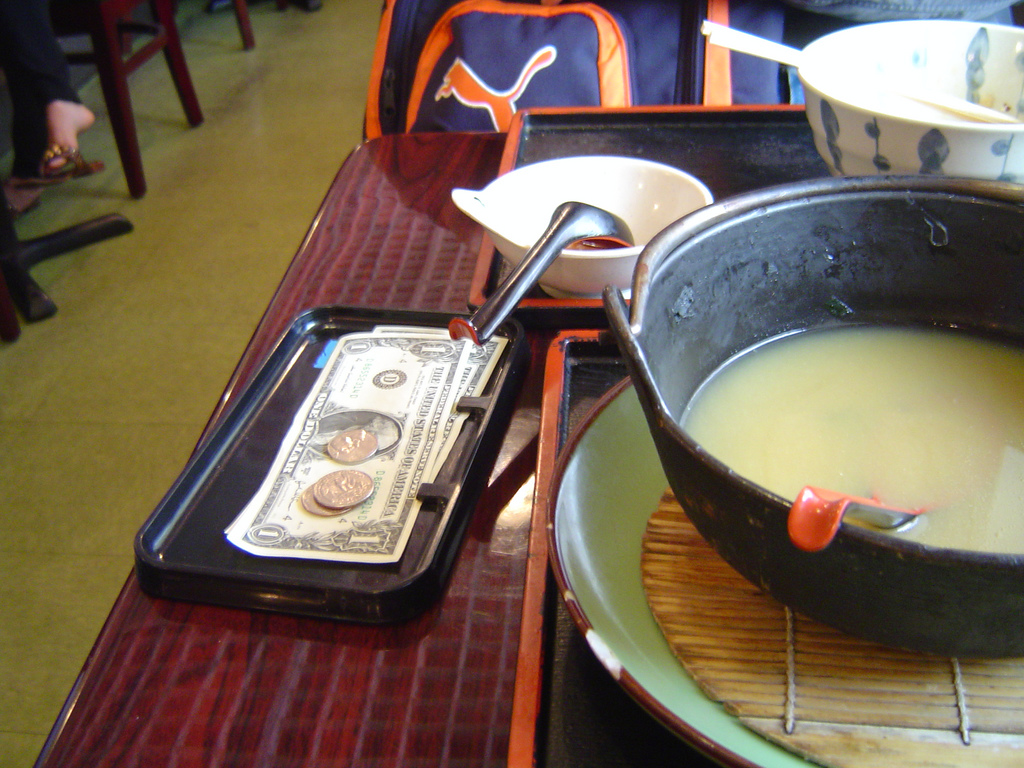On November 8, 2016, the United States Department of Agriculture (USDA) announced that a New York City-based food producer was voluntarily recalling more than 1,700 pounds of its frozen pork egg rolls. I first learned about the recall nearly a week later, on November 14, 2016, thanks to a brief note contained in a daily newsletter I receive that’s published by the Food & Drug Law Institute, a Washington, D.C.-based nonprofit focused on Food and Drug Administration (FDA) legal and regulatory matters.
On its face, the egg roll recall appeared to be almost wholly ordinary. Water Lilies Food, a Queens, New York company, produces the egg rolls and supplies them to Stop & Shop, a grocery chain with locations throughout the Northeast United States. Water Lilies recalled the egg rolls, which it packages under the Stop & Shop store brand label, because it had mistakenly placed a very small number of the shrimp spring rolls it also makes for Stop & Shop in packages used to market the pork egg rolls it produces for the grocery chain.
 USDA/FDA
USDA/FDA A customer found shrimp spring rolls in a package meant for pork egg rolls. Shellfish are an allergy concern, so a recall was initiated
Recalls are common. In recent years USDA has announced more than 100 recalls annually of foods it regulates. The FDA announces far more for foods it regulates (there were more than 9,000 FDA recalls announced in 2015, for instance). And some food recalls grab headlines. In July 2017, for example, Reuters reported the USDA had announced a recall of “more than 7 million pounds of hot dogs and sausages mostly under the Sabrett brand name after consumers complained about finding small pieces of bone in some of the products.”
But most recalls—including the egg roll recall—pass virtually unnoticed. They’re not considered newsworthy because, unlike in some cases (including the Sabrett example—where, the Reuters report noted, “someone who ate one of the hot dogs suffered a ‘minor oral injury”), there’s no indication the recalled egg rolls ever sickened, harmed, or killed anyone. What’s more, while the Sabrett recall and other USDA recalls sometimes ensnare many millions of pounds of food, the egg roll recall involved under a ton. (I wrote a piece for the New Food Economy recently on the continuing fallout from a nearly 9-million-pound beef recall, which I discuss at length in my recent book, Biting the Hands that Feed Us.)
So why did this relatively tiny, virtually unnoticed recall of a small amount of egg rolls catch my eye, so much so that I reached out to USDA within days of the agency’s recall announcement in order to file a Freedom of Information Act (FOIA) request for material related to the recall?
A closer look at the egg roll recall reveals a fascinating saga that touches on many broader—and occasionally bizarre—regulatory issues that highlight how the federal government protects (and sometimes fails to protect) the safety of our food supply. It also demonstrates how overlapping jurisdiction between FDA and USDA can contribute to delays, finger-pointing, and confusion, and can put lives in danger.
 USDA/FDA
USDA/FDA The inner packaging of the egg rolls was labeled “shrimp”
Total recall
Despite the fact that they are both empowered to regulate interstate commerce in food, USDA and FDA enforce different sets of laws. The key law under which FDA operates is the Food, Drug, and Cosmetic Act, enacted in 1938 to tighten controls over drugs and food after an untested pharmaceutical killed more than 100 people in 15 states. The USDA enforces the Federal Meat Inspection Act, which Congress passed in 1907 due in large part to public fallout resulting from publication of Upton Sinclair’s novel, The Jungle, a tale of ghastly working conditions in the meatpacking industry. The agency also enforces the Poultry Products Inspection Act, and other laws.
Whether or not a food is regulated by FDA or USDA depends in large part on whether the food is “amenable” —meaning the species is subject to the laws and regulations of the respective agency. Sometimes the rules and the distinctions they draw are clear, as when laws detail USDA’s (rather than FDA’s) authority to inspect commercial cattle slaughterhouses, or when regulations describe FDA’s role (rather than USDA’s) in encouraging nutrition labeling of raw fruits and vegetables. Other times, such distinctions can be lacking, murky, or seemingly arbitrary. Questions can arise about where one agency’s authority ends and the other’s begins.
Examples of this phenomenon are legion. In some cases, they’re one of the first things students in U.S. food law courses learn in class. For example, USDA has regulatory authority over meat, poultry, and most egg products. But FDA regulates pretty much everything else, from milk to Pop Tarts to baby carrots to eggs and seafood. (All seafood, that is, except for one species of fish that Congress decided would be regulated by USDA as of 2016.)
And there’s more. The USDA regulates open-faced sandwiches. The FDA (regardless of meat content) regulates the more traditional sandwich made with two slices of bread.
The USDA regulates frozen pepperoni pizza. The FDA regulates frozen cheese pizza.
In cases where a food is regulated by USDA, its proposed label must be submitted to USDA for agency pre-approval. The FDA requires no such label pre-approval for foods it regulates.
These are just some examples of jurisdictional mumbo jumbo. But the confusing and weird (and sometimes seemingly arbitrary) regulatory distinction doesn’t stop there, as a 2017 FDA investigations manual makes clear.
Take eggs—a particularly interesting, rich, and confusing example of regulatory overlap. As the FDA investigations manual describes, USDA regulates frozen, liquid, or dehydrated egg products (such as Egg Beaters), including their labeling. The FDA regulates eggs in the shell—the dozen you buy at your local grocery—including their labeling.
If that split seems confusing and arbitrary, that’s because it is. Law students I’ve taught in my Food Law & Policy Seminar often wonder why USDA regulates a chicken but not its egg (unless that egg is out of the shell). At best, I can offer them only halfhearted theories about why such shell games exist.
Sadly, the rules can be even more confusing in practice. The USDA doesn’t regulate eggnog—a drink made from egg products—for example. Rather, FDA does.
But that’s nothing compared to the inspection regime within facilities that process eggs.
“Egg products processing plants (egg breaking and pasteurizing operations) are under USDA jurisdiction,” that 2017 FDA manual states. “Egg processing plants (egg washing, sorting, packing) are under FDA jurisdiction.”
If only it were so simple.
While FDA inspects egg production facilities, USDA oversees the voluntary grading of shell eggs. This determines whether or not, for example, shell eggs are awarded a top grade—dubbed “AA”—or some lesser grade.
Both USDA graders and FDA inspectors may be present at the same egg processing plant. And some of their food safety duties overlap. But, as I describe in a 2011 law-review article, “The Food-Safety Fallacy,” that overlap is no panacea. Instead, it can breed confusion and lead to dramatic breakdowns in food safety.
An example I detail in that 2011 article is a stark illustration of this breakdown. The August 2010 recall of nearly 400-million salmonella-tainted eggs by two Iowa producers spurred an outbreak of finger-pointing between USDA and FDA. The USDA graders who were on site forty hours per week should have noticed the rats and other filth that were present at the facilities. The FDA inspectors, who visit food producers on a far less regular basis, might have noticed, too. Instead, both agencies blamed the massive recall on the other.
As I note in my article, the finger pointing was enough to prompt Senator Chuck Grassley (R-Iowa) to write to then-USDA Secretary Tom Vilsack, asking Vilsack to explain “deficiencies in food safety communications” between the two agencies.
Senator Grassley’s complaints were nothing new. In 2004, the federal Government Accountability Office (GAO) issued a report, USDA and FDA Need to Better Ensure Prompt and Complete Recalls of Potentially Unsafe Food, seeking to address shortcomings in each agency’s recall effectiveness. That followed a 2000 GAO report, Actions Needed by USDA and FDA to Ensure That Companies Promptly Carry Out Recalls.
And, as the egg roll recall demonstrates, such dangerous deficiencies still thrive.
 FDA/USDA
FDA/USDA Part of the recall process involves keeping photographs of the mislabeled products
Know your roll
The wheels of the egg roll recall were set in motion last fall, when in late October, an unnamed customer (her name is redacted from the electronic documents I received from USDA) reached out to the U.S. headquarters of Dutch grocery giant Ahold, the parent company of U.S. grocers Stop & Shop, Giant, Food Lion, Peapod, and others, to say she had purchased 10 packs of pork egg rolls and discovered instead shrimp spring rolls inside.
The recall was prompted by two technical violations: a) the products packed inside the cartons and labeled as such on the inner film were shrimp spring rolls. However, they were mislabeled on the outer carton as pork egg rolls—or “misbranded,” in USDA and FDA parlance and b) the outer carton failed to note the presence of an undeclared allergen, shrimp, one of eight major food allergens that must be declared prominently on all food packaging. Because allergens may sicken or kill a vulnerable person, and that person can’t reasonably know whether or not a particular food contains allergens that could harm them unless that information is declared on packaging, FDA and USDA designate undeclared allergens “Class I”, a top recall priority. In this case, that designation meant there was “a reasonable probability that the use of the product will cause serious, adverse health consequences or death,” due to the presence of an undeclared allergen, shellfish.
 USDA/FDA
USDA/FDA The makers of the egg rolls received a customer complaint regarding a packaging problem on October 28, 2016
The lethargic and pass-the-buck approaches both FDA and USDA took in this high-priority recall raise serious concerns about the agencies’ fitness. In fact, records I obtained through my FOIA request show it took at least six days of foot dragging and back-and-forth emails for the agencies to determine which one would even announce a recall. Considering, again, that this Class I egg roll recall was the most serious classification USDA can assign, that delay could have cost lives.
The earliest-dated agency record I received in my ninety-four-page trough of FOIA documents is an email dated November 1, 2016 from Water Lilies, the egg roll producer, to USDA’s Food Safety & Inspection Service (FSIS), with images of the company’s respective pork egg roll and and shrimp spring roll outer carton packaging.
 USDA/FDA
USDA/FDA Less than half an hour later, an unnamed FSIS official wrote to an FSIS colleague, Salah Ibrahim, deputy district manager of FSIS’s Philadelphia District, referencing an earlier phone call between the two concerning the egg rolls, and spelling out details of the potential case.
“All involved product is reported sold out with few cartons assumed to be still with customers,” the FSIS official wrote to Ibrahim. The FSIS colleague also told Ibrahim that Water Lilies sought agency “guidance pertaining to recall under the circumstances.”
Shortly afterwards, Ibrahim emailed several FSIS colleagues to alert them about the need for a product recall. While he was certain of the need to act, he was less sure whether USDA or FDA should be the agency to do it.
“Will that rise to the level of recall by FSIS or a recall for non-amenable products by FDA?” he wondered.
Ibrahim’s simple inquiry highlights exactly what I find so fascinating about this case. The USDA regulates pork. The FDA regulates shrimp. The egg rolls said pork on the package. That’s clearly a USDA food. But that package contained shrimp, not pork. That’s clearly an FDA food. The product ran afoul of both agencies’ regulations. But which agency would facilitate a recall?
 USDA/FDA
USDA/FDA Immediately upon receiving word of the problem, a USDA official wondered about who would conduct the recall
Given my earlier writings on the regulatory morass between FDA and USDA, I had a hunch there’d be a paper trail between the agencies that might address that question. I hoped the discussion would be a juicy one. And that’s why I filed the FOIA.
In response to Ibrahim’s November 1 email, discussion of the issue sped around the corridors of USDA. The next day, Donald Williams, FSIS’s recall management coordinator, wrote to his counterpart at FDA, Cecilia Wolyniak, to alert her to the need for a recall, and to inform Wolyniak that USDA had determined FDA should manage that recall.
“I just wanted to give you a heads up of a potential recall,” Williams writes. “We consulted with policy [FSIS’s Office of Policy Program Development] and their response was ‘Since the shrimp egg rolls labeled as pork egg rolls are not amenable to [USDA enforcement], the shrimp rolls are misbranded under the [Food, Drug, and Cosmetic Act, which FDA enforces]. FDA should be responsible for coordinating the recall.’”
 USDA/FDA
USDA/FDA The next day, officials discussed punting the recall to FDA
Williams also noted that USDA’s Philadelphia office was in the process of reaching out to their Philadelphia FDA counterparts. After several days of subsequent internal FDA emails, the agency finally responded to USDA’s Williams on November 7.
“This is a USDA product since it is a [p]ork product under USDA seal that is misbranded and containing undeclared allergens,” wrote Judith Paterson, FDA’s emergency response coordinator for the Philadelphia district, in an email to Williams and FDA colleagues. “I do not believe it is an FDA product because the recall would be for Pork Egg Rolls not Shrimp Rolls.”
Paterson also questioned why the Philadelphia office would be involved, anyway. The product in question was produced in New York.
“Why did you send this to PHI-DO since the USDA Seal identifies Water [L]ilies Food Inc. Address 4510 19th Street Astoria, N.Y. 11105 as the manufacturer,” Paterson wondered.
While both agencies agreed about the need for a recall—no one appears to have suggested at any point that a recall was unnecessary—neither agency had alerted the public to that need almost a week after federal food-safety officials first learned about the presence of a potentially deadly undeclared allergen in the food supply. Neither agency had sent inspectors to Stop & Shop locations to see if they might still be selling the egg rolls in question.
 USDA/FDA
USDA/FDA Days later, the agencies were still emailing back and forth about who would handle the recall
Still, USDA continued to push back at FDA’s call for USDA to spearhead a recall.
“It’s my understanding that it is an FDA product that was mistakenly packed in a USDA package as my email states below,” FSIS’s Williams wrote to an FDA official on November 7. “Our Office of Policy Program Development assessed it and made that determination.”
An FDA official replied minutes later, and explained in simple terms why USDA’s Office of Policy Program Development had it wrong.
“The product is labeled as Pork Egg Rolls and the recall will be for Pork Egg Rolls which is a USDA regulated product,” wrote the unnamed FDA official. “The only way for consumers to determine what is being recalled is to recall the Pork Egg Rolls. When your Office of Policy Program Development assessed it and made that determination did they realize it was a USDA product being recalled?”
In other words, the only way for a consumer to know they were in possession of a product that was subject to a recall would be for them to have intended to purchase pork egg rolls, which are unquestionably regulated by USDA.
“Please let us know if USDA will be handling this,” the FDA official concluded.
Twenty minutes later, at 4:48 p.m. on November 7, Williams and another FSIS official responded to FDA in separate emails and confirmed FSIS would handle the recall.
At least 147 hours after first being notified about the need for a recall—and more than a week after Stop & Shop’s parent company first learned about the mislabeled egg rolls—USDA had finally agreed to facilitate the recall.
 FDA/USDA
FDA/USDA USDA ultimately handled the recall
As I noted earlier, USDA announced the egg roll recall the following day, on November 8. That same day, USDA inspectors visited 19 Stop & Shop locations: 6 in Massachusetts, 2 in Connecticut, and 11 in New York State. Inspectors did not visit Stop & Shop locations in Rhode Island, the only other state where the recall was in effect. Interestingly, there are no records that indicate inspectors visited the Stop & Shop location in Huntington, New York, where the unnamed woman bought the egg rolls that triggered the recall. (FSIS did not respond to a request for confirmation of that location, but the original notification email from Giant Food Consumer Affairs to Water Lilies indicated a store and district number, which I was able to trace to the Huntington store).
USDA inspectors rely chiefly on a combination of personal observations, store records, and statements from store staff to determine whether a particular store sold, destroyed, or has on hand any product subject to a recall. According to my analysis of the FSIS inspectors’ reports of recall effectiveness (a standardized agency recall form and checklist), of the 19 stores visited, only 2—both located in New York—were able to confirm how many pounds of the product they had actually sold: less than 19 total.
 USDA/FDA
USDA/FDA In response to the recall, the egg roll company implemented additional measures to double-check labels
One USDA inspector who appears to have visited both locations determined that some of the offending egg rolls had been sold at each location, based on manager statements about the “difference of of (sic) the product condemned and total product received[.]” But that doesn’t mean the other Stop & Shop locations that inspectors visited sold none of the recalled egg rolls.
“The amount of product received and sold is not know[n],” a USDA inspector who visited a Stop & Shop location in New Bedford, Massachusetts noted in his or her records, even though s/he filled in “0” next to the amount of egg rolls sold by that particular store. In another strange report, one inspector wrote that they’d personally observed that none of the egg rolls had been sold or consumed. While I don’t doubt this to be true in a technical sense—it would be quite a surprise for an inspector (or anyone, for that matter) to witness a consumer buying and then consuming frozen egg rolls while in a store, whether or not those egg rolls were also subject to a recall—the technical truth hides a larger fact. The USDA appears unable to confirm or even estimate how many pounds of the egg rolls were sold. And—even though every FSIS inspector wrote “0” on their respective Stop & Shop inspection reports next to “Consumed Amount (LBS)”—FSIS freely admits that amount is not knowable. An FSIS spokesperson tells me “FSIS cannot determine how much of the product is consumed once a customer purchases product from a store.”
Inspectors did confirm that the 20 locations they visited in 3 states had destroyed and disposed of a total of more than 244 pounds of egg rolls. They also found a total of nearly 93 pounds of egg rolls on hand at 5 Stop & Shops (all of which was part of the 244 pounds that were eventually destroyed and disposed of).
Notably, while the recall applied to more than 1,700 pounds of egg rolls, Water Lilies and USDA insist that only between 15 and 20 boxes of shrimp spring rolls were mislabeled as pork egg rolls during packaging. If that’s true, then the customer who reported the mislabeling bought at least half of those mislabeled egg rolls—ten boxes—all by herself. That means there were probably no more than 5 or 10 mislabeled boxes left among the 1,710 lbs. of egg rolls that were subject to the recall.
 Flickr/USDA
Flickr/USDA USDA headquarters in Washington, D.C. The FOIA documents show that offices around the country were involved in handling this recall
Roll with it?
Several important questions linger in the wake of this recall. How, for example, can FSIS inspectors claim, as they did, that “0” egg rolls from 18 of the 20 Stop & Shop stores that inspectors visited had been sold? That’s particularly vexing in light of emails I’ve read between FSIS staff that indicated “[a]ll involved product is reported sold out with few cartons assumed to be still with customers.”
I also wanted to know how common the particular overlapping FDA and USDA jurisdictional issues raised by this recall are, and whether it was unusual for the agencies to spend days sparring over which one would handle a recall that implicates foods regulated, respectively, by each agency. Was it unusual, I asked FSIS, for USDA to suggest to FDA that this was an FDA recall, and for FDA to push back to the point that USDA managed the recall? An FSIS spokesperson responded that “this was not unusual.”
In light of the issues this recall raises—given that the recall concerned an undeclared and potentially fatal allergen and that nearly a week passed between the time USDA first learned of the mislabeled egg rolls and the time the agency agreed to facilitate a recall—I asked FSIS if the agency was pleased with this recall. “Each case is different,” the FSIS spokesperson told me. “FSIS field personnel conduct ‘effectiveness checks’ throughout the distribution chain to verify that the recalling firm has been diligent in notifying the consignees of the need to retrieve and control recalled product, and that the consignees responded accordingly.”
Certainly, each case is different. But that’s why I asked whether FSIS is satisfied with the timeliness and effectiveness of this recall.
Even if questions remain about whether either agency can facilitate a recall of this nature in an efficient and expeditious manner, that hasn’t stopped the maker of the egg rolls, Water Lilies, from taking remedial actions of its own. Records indicate the company has implemented a barcode scanner system it hopes will prevent similar problems in the future. Now, food items being packaged are scanned during and production and an “alarm will sound and conveyor belt will stop” if the packaging doesn’t match the contents of the box. In addition, the company said in a letter addressed to FSIS that it intended to increase the text size of the product name on inner film packaging.
Ultimately, I don’t see the egg roll recall as a case in which any particular person at FDA or USDA dropped the ball. Given the grave nature of a Class I recall, I like to think I’d have done some things differently. But the chief problems here lie with the laws and regulations, rather than with the people enforcing them. With problems so engrained, longstanding, structural, and systemic, it will take a concerted effort in Washington to right the ship. Given the political climate today, that’s unlikely to occur. As this seemingly simple, straightforward recall of 1,710 pounds of egg rolls demonstrates, the need to better ensure prompt and complete food recalls is still very much an ongoing issue.










